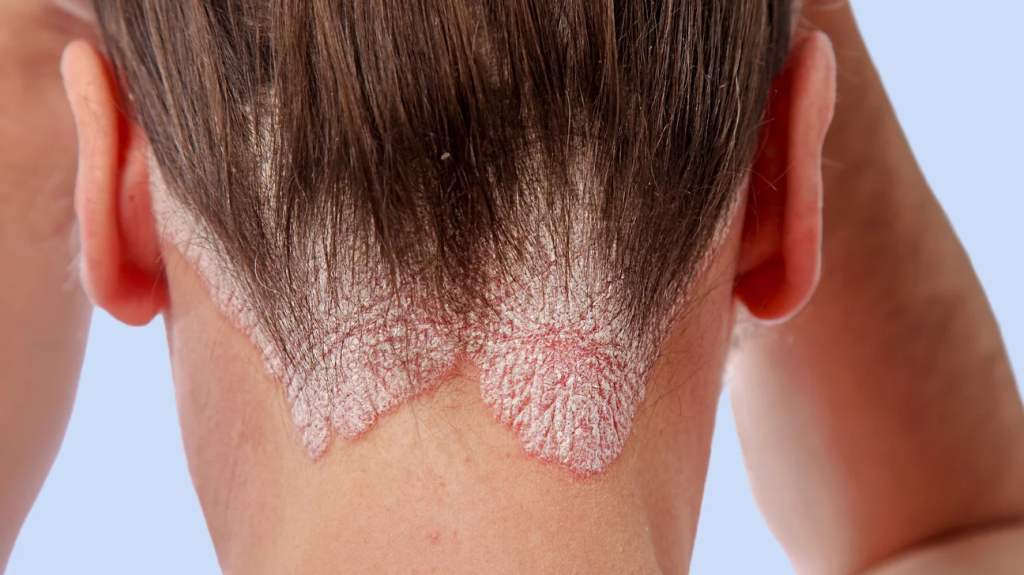Understanding the Common Culprit: Scalp Fungi and Dandruff
Discovering effective methods to combat dandruff involves understanding its root causes and symptoms. Dandruff, a prevalent skin condition, often arises from an excessive proliferation of naturally occurring scalp fungi. This condition isn’t harmful or contagious, and its resolution frequently involves using appropriate anti-dandruff shampoos. However, persistent symptoms might indicate underlying medical concerns. Additionally, susceptibility to dandruff varies among individuals. Are you experiencing the discomfort of a dry, itchy, and flaky scalp?

Dandruff: A Closer Look at Scalp Skin Flaking
Dandruff represents a prevalent skin condition primarily impacting the scalp. This common disorder triggers flaking of the scalp’s skin.
RELATED ARTICLE: Here’s how to really deal with dandruff
Why do you have dandruff?
The presence of dandruff is not primarily linked to inadequate hygiene practices. However, irregular hair washing might accentuate its visibility.
Age and Dandruff
Dandruff commonly initiates in early adulthood, persisting through middle age, and can also affect older individuals, albeit less frequently. In rare cases, it may persist throughout one’s lifetime
Causes of Dandruff
Dandruff occurs due to either dry skin or an accumulation of oil on the scalp.
- Dry Skin: When the scalp becomes excessively dry, it leads to flakiness and shedding of dead skin cells. This shedding is what manifests as dandruff.

2. Seborrheic Dermatitis: A condition where the scalp produces an excessive amount of oil (sebum), leading to greasy, yellowish flakes. This can contribute to dandruff formation.

3. Malassezia: This is a type of fungus that naturally resides on the scalp. An overgrowth of this fungus can cause irritation, leading to increased skin cell turnover and dandruff.

4. Sensitivity to Hair Products: Some people may experience dandruff-like symptoms due to sensitivity or allergic reactions to certain hair care products.

5. Stress, Diet, and Other Factors: Stress, poor diet, hormonal changes, and certain medical conditions can also play a role in exacerbating dandruff.
6. Tinea capitis: Dandruff can be caused by tinea capitis, a fungal infection commonly known as ringworm. This condition presents as a red or silver rash on the scalp and may occasionally lead to patchy hair loss.

7.Cradle cap: Cradle cap, a benign skin condition prevalent in infants, showcases as oily, yellowish scales appearing on the scalp, eyebrows, and diaper region.

Symptoms of Dandruff
Dandruff symptoms can vary from person to person, but the most common signs include:
- Itchy Scalp: Persistent itching of the scalp is a prominent symptom experienced by many individuals with dandruff. This itchiness can range from mild to severe and may be accompanied by irritation.

2. Flakiness: Flakes of dead skin cells on the scalp are a hallmark of dandruff. These flakes can be white or yellowish in color and are often noticeable on the hair, shoulders, or clothing.

3. Dryness or Greasiness: While dryness is commonly associated with dandruff, some individuals might experience greasy or oily patches on the scalp, particularly in cases of seborrheic dermatitis.

4. Redness or Irritation: The scalp may appear red or inflamed due to the constant itching and scratching associated with dandruff. This irritation can sometimes lead to a sensitive or tender scalp.

5. Sensitivity to Hair Products: In some instances, dandruff can exacerbate sensitivity to certain hair care products, leading to increased symptoms or discomfort.

6. Secondary Infections: Scratching the scalp excessively due to itching can cause small wounds or breaks in the skin, potentially leading to secondary bacterial or fungal infections.

Risk factors of Dandruff
Specific health conditions such as Parkinson’s disease and other nervous system disorders appear to elevate the likelihood of dandruff. Additionally, individuals with HIV or weakened immune systems may also experience an increased risk of developing dandruff.
How to deal with Dandruff?
Managing even severe and uncomfortable cases of dandruff is feasible. The most effective approach involves the use of anti-dandruff shampoos and targeted scalp treatments.
READ MORE RELATED ARTICLE: Genetic Determinants of Hair Loss,Unraveling the Role of Androgenetic Alopecia
Treatment of Dandruff
Treatment often involves using specialized anti-dandruff shampoos containing active ingredients like zinc pyrithione, ketoconazole, selenium sulfide, or salicylic acid to manage the condition by controlling fungus growth, reducing oiliness, or moisturizing the scalp, depending on the underlying cause.
The Essential Role of Shampoo Selection
Selecting an appropriate shampoo stands as the initial crucial step in addressing dandruff. For optimal outcomes, adhering to the instructions provided on the bottle is essential
recommendation
The American Academy of Dermatology Association (AAD) recommended to Caucasian or Asian, shampoo daily and use dandruff shampoo twice a week.